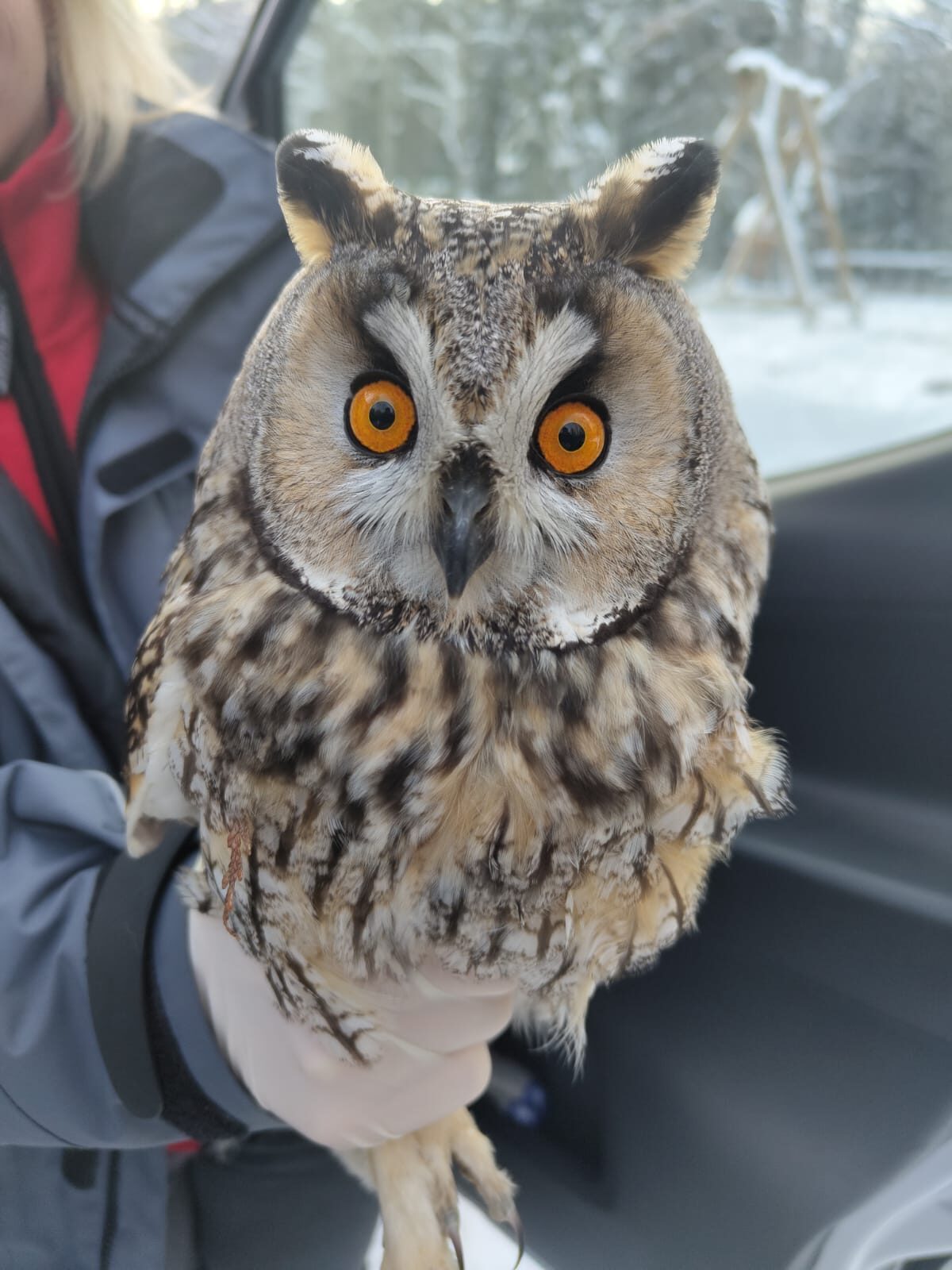Where do they live?
The long-eared owl lives in forests, forest edges or isolated clusters of trees near open fields and grasslands. They hunt at night in open areas, soaring silently over the hunting ground.
How do they live?
They do not build nests. They use the nests built by other birds, such as crows and magpies. The long-eared owl lives close to human settlements and can be seen in villages and towns.
What do they eat?
The long-eared owl hunts mainly rodents, but also small mammals, birds and snakes. Prey is usually caught on the ground or in low vegetation. Immediately after capture, the long-eared owl kills its prey by piercing the base of the skull and then swallowing the prey whole. During the breeding season, surplus prey is stored in the nest for later consumption. The long-eared owl carries small prey in its beak and larger prey in its talons.
What is the difference between the long-eared owl and other owls? People often confuse the long-eared owl with the European eagle owl (Bubo bubo) because both species have “ears” and orange eyes. However, the long-eared owl is small in body size, while the European eagle owl is the largest owl in the world!
Did you know?
- The long-eared owl has large, reddish-brown facial discs with a dark grey border. The facial discs improve the owl's ability to hear the quietest sounds.
- Most owls, including the long-eared owl, have asymmetrical ear slits: the left is higher than the right. The asymmetric slits allow the owl to better locate the source of the sound.
Common to owls
- Owls eat their prey in a safe place above the ground, such as a tree branch, after piercing it with their sharp talons. Smaller prey are swallowed whole (with all their feathers, hair, bones and claws), head first, while larger animals are first killed and then torn to pieces by owls using their beaks. Prey is also cut into pieces if it is to be fed to the young. 3-4 hours after the meal, the long-eared owl discharges the pellets - undigested parts of a bird's food, such as hair or bones. If there is a lot of prey, the ones that are not consumed will be hidden.
- All owls are far-sighted and can't see objects up close, so they have filoplumes - small hair-like feathers on their beaks - to feel out their prey. Owls have good binocular vision compared to diurnal birds of prey. The visual angle of the two eyes overlap by 50-70%, compared to 30-50% for other birds. Owls can turn their heads a maximum of 270 degrees.
- In several owl species, one ear slit is higher than the other. Owls use their unique ears to locate potential prey that is not visible to the eye because it is hidden under leaves, snow or undergrowth vegetation. When an owl hears a sound from a potential prey, it is able to pinpoint the location of the sound because of the time difference in which the sound is perceived in the left and right ear. The owl then turns its head in such a way that the sound is received in both ears at the same time. This makes it clear that the object is directly in front of it.
- All owls can ruffle their feathers upwards in a moment of danger, giving the impression of being larger in size, and hissing to frighten their attackers.
- Several owl species are known to lay and breed eggs at the same time. For this reason, owl nests can contain chicks of varying ages. If the parents are short of food, they will raise and feed only one - the oldest chick. The stronger chick can often kill and eat its siblings. It's called cainism (siblicide).
- Owls are territorial birds, with all species having a defined territory, at least during the breeding season. They are mostly monogamous, having only one partner during the breeding season, which they keep for life. Tawny owls, for example, reunite with their mate in their breeding territory at the start of the breeding season.
- Owls are mostly active and hunt at night and dusk, rarely during the day.
- Only females will brood, but both parents will look after the young. In several species (e.g., Ural owls and tawny owls), the young leave the nest before they are fully fledged, but remain close to the nest until they are fully independent.
- All owls are considered symbols of wisdom, knowledge and deep understanding. In some cultures, however, the owl is associated with death and mourning, with magical powers and with evil. It is often believed that owls are messengers from the afterlife, bringing news of the death of a loved one

